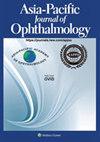Real-World Large Sample Assessment of Drug-related Dry Eye Risk: Based on the FDA Adverse Event Reporting System Database
IF 4.5
3区 医学
Q1 OPHTHALMOLOGY
引用次数: 0
Abstract
Purpose and design
This study aimed to evaluate the risk of drug-related dry eye using real-world data, underscoring the significance of tracing pharmacological etiology for distinct clinical types of dry eye.
Methods
Analyzing adverse event reports in the Food and Drug Administration Adverse Event Reporting System (FAERS) from January 2004 to September 2023, we employed disproportionality analysis and the Bayesian confidence propagation neural network algorithm. The analysis involved categorizing drugs causing dry eye, assessing risk levels, and conducting segmental assessments based on the time of onset of drug-related dry eye adverse reactions.
Results
In the FAERS database, adverse reactions related to dry eye were linked to 1160 drugs. Disproportionality analysis identified 33 drugs with significant risk, notably in ophthalmic (brimonidine, bimatoprost), oncology (tisotumab vedotin, erdafitinib), and other medications (isotretinoin, oxymetazoline). The top three drugs with the highest risk of drug-related dry eye are isotretinoin (Bayesian confidence propagation neural network (BCPNN) = 6.88), tisotumab vedotin (BCPNN = 6.88), and brimonidine (BCPNN = 6.77). Among different categories of drugs, respiratory medications have the shortest mean onset time for drug-related dry eye, averaging 50.99 days. The prevalence skewed towards females (69.9 %), particularly in menopausal and elderly individuals (45–70 years old, mean age 54.7 ± 18.2). Reports of drug-related dry eye adverse reactions showed an annual increase.
Conclusion
Informed clinical decision-making is crucial for preventing drug-related dry eye. Assessing the risk of dry eyes associated with both local and systemic medications helps optimize treatment and provide necessary cautionary information.
药物相关干眼症风险的真实世界大样本评估:基于 FDA 不良事件报告系统数据库。
目的和设计:本研究旨在利用真实世界的数据评估药物相关干眼症的风险,强调对不同临床类型的干眼症进行药理病因追踪的重要性:分析食品药品管理局不良事件报告系统(FAERS)2004 年 1 月至 2023 年 9 月期间的不良事件报告,我们采用了比例失调分析和贝叶斯置信度传播神经网络算法。分析包括对导致干眼症的药物进行分类、评估风险等级,以及根据药物相关干眼症不良反应的发生时间进行分段评估:在 FAERS 数据库中,与干眼症相关的不良反应与 1160 种药物有关。比例失调分析确定了 33 种具有重大风险的药物,尤其是眼科药物(溴莫尼定、比马前列素)、肿瘤药物(替索单抗维多汀、埃达非替尼)和其他药物(异维A酸、奥美沙唑啉)。药物相关干眼症风险最高的前三种药物是异维A酸(贝叶斯置信传播神经网络(BCPNN)=6.88)、替索单抗维多汀(BCPNN=6.88)和溴莫尼丁(BCPNN=6.77)。在各类药物中,呼吸系统药物导致药物性干眼症的平均发病时间最短,平均为 50.99 天。发病率偏向女性(69.9%),尤其是更年期和老年人(45-70 岁,平均年龄为 54.7 ± 18.2)。与药物相关的干眼症不良反应报告呈逐年上升趋势:结论:知情的临床决策对于预防药物相关干眼症至关重要。评估与局部和全身用药相关的干眼症风险有助于优化治疗并提供必要的警示信息。
本文章由计算机程序翻译,如有差异,请以英文原文为准。
求助全文
约1分钟内获得全文
求助全文
来源期刊

Asia-Pacific Journal of Ophthalmology
OPHTHALMOLOGY-
CiteScore
8.10
自引率
18.20%
发文量
197
审稿时长
6 weeks
期刊介绍:
The Asia-Pacific Journal of Ophthalmology, a bimonthly, peer-reviewed online scientific publication, is an official publication of the Asia-Pacific Academy of Ophthalmology (APAO), a supranational organization which is committed to research, training, learning, publication and knowledge and skill transfers in ophthalmology and visual sciences. The Asia-Pacific Journal of Ophthalmology welcomes review articles on currently hot topics, original, previously unpublished manuscripts describing clinical investigations, clinical observations and clinically relevant laboratory investigations, as well as .perspectives containing personal viewpoints on topics with broad interests. Editorials are published by invitation only. Case reports are generally not considered. The Asia-Pacific Journal of Ophthalmology covers 16 subspecialties and is freely circulated among individual members of the APAO’s member societies, which amounts to a potential readership of over 50,000.
 求助内容:
求助内容: 应助结果提醒方式:
应助结果提醒方式:


